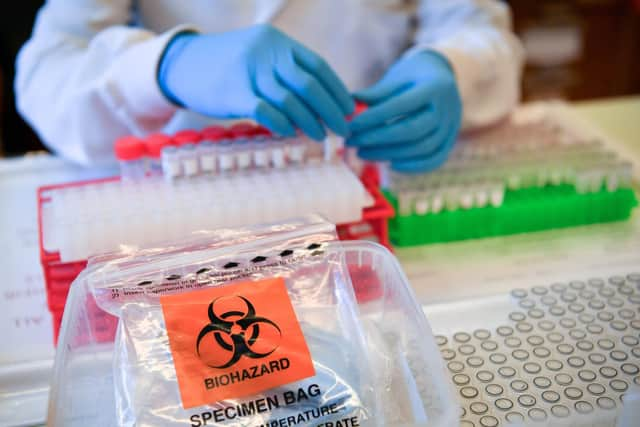Up to 16,000 Covid test kits have been delivered to Leicestershire as Harborough district moves into the toughest coronavirus tier
and live on Freeview channel 276
Up to 16,000 vital lateral flow test kits have been delivered to Leicestershire County Council as Harborough district went into the toughest Tier 3 Covid-19 zone today (Wednesday).
The county council has received its first batch of the kits as Leicester and all of Leicestershire were put under the most stringent coronavirus restrictions as the second national lockdown ended.
Advertisement
Hide AdAdvertisement
Hide AdThe move came as the rate of infection is continuing to drop sharply across Harborough.


And in more positive news, the UK’s regulators have today approved Pfizer/BioNTech's Covid-19 vaccine – which could kickstart a mass vaccination over the next few days.
The Government has ordered 40 million doses of the vaccine – and it could be made available from next week in a huge boost coming up to Christmas and the New Year.
Meanwhile, county council leader Cllr Nick Rushton said the “welcome arrival” of test kits puts Leicestershire at the “forefront of the plan to expand asymptomatic testing across the country”.
Advertisement
Hide AdAdvertisement
Hide AdFor the period from Saturday November 19 to Friday November 25, infection rates stood at 193.7 per 100,000 in Leicestershire.
That was slightly above the national rate of 175.8 per 100,000.
The latest weekly infection rate for Harborough up to November 25 was 216 per 100,000 people, a massive drop on the figure of 294 for the previous seven days.
“It’s welcome news that the kits have arrived, we can now start the work of getting them to ‘hotspots’ where infection rates are high.
Advertisement
Hide AdAdvertisement
Hide Ad“The more people we can test, the more we’ll be able to bring this virus under control,” said Cllr Rushton.
“I would urge anyone with any symptoms, no matter how mild, to book a test.”
Mike Sandys, director of public health for Leicestershire County Council, has outlined in more detail how the test kits work.
“The challenge has always been that some people who have Covid-19 don’t show any symptoms.
Advertisement
Hide AdAdvertisement
Hide Ad“Where the lateral flow tests differ from the usual swab kits is that there’ll be a test result within an hour, without the need for lab processing,” said Mike.
“It now means we can test high-risk groups, help identify cases and then get people to self-isolate quickly to break the chain of infection.”
The trialling of the tests will back up the tireless work being done by the county council’s own test and trace teams.
They use local networks to identify people who may not have been tracked down through national test and trace procedures.
Advertisement
Hide AdAdvertisement
Hide Ad“The focus of our teams is to contact and offer support to vulnerable people.
“Regular testing will protect them,” stressed Mike.
“This can be through offering advice to people with symptoms, providing advice to those self-isolating, putting families in touch with community hubs, and tips such as getting priority on online food deliveries.”
Lateral flow testing in Harborough and Leicestershire will be focused on:
- Cases in high-incidence areas, including deploying the kits where an outbreak has an impact on critical services or a large proportion of staff and students at schools and colleges are affected. The tests will also target electoral wards with the highest rates
Advertisement
Hide AdAdvertisement
Hide Ad- Protecting vulnerable members of the population through regular testing. Examples include: staff providing day care services and staff working in supported living settings, domestic abuse refuges and homelessness settings
- Protecting critical services through regular testing, such as police, fire and rescue services as well as staff working in the education sector.